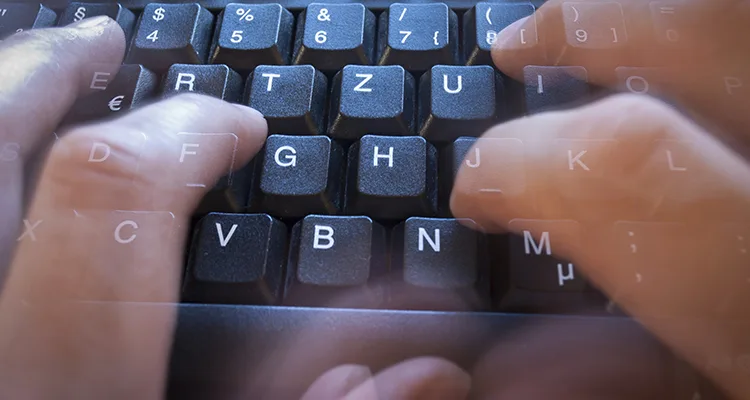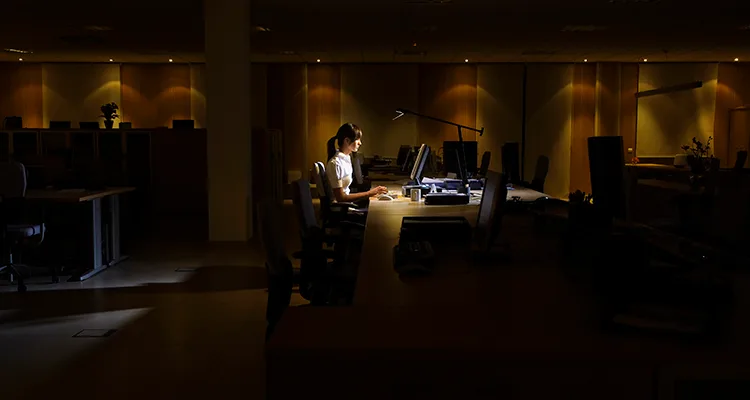Michelle, a West Australian woman in her late 30s, was a bit bewildered the first time she got a Facebook message from herself. She had set up her profile only a few months earlier, and wasn’t exactly enamoured with the technology. So when a message appeared in her inbox, urging her to “check this out”, she did.
“This”, it turned out, was a Facebook profile page set up by a cyberbully. It used a real photo of Michelle, and Michelle’s real name (last names have been removed from this story, to protect victims from further invasion of their privacy). Michelle reported the fake page to Facebook, and a few days later it was removed. But then another one was created. And another.
At first, fake Michelle posted about liking various websites, and sent friend requests — which were accepted by real Michelle’s friends. But things escalated rapidly: fake Michelle started to talk about the kinky sex she was into, including references to children, fruits and animals; she sent lewd messages to members of real Michelle’s high school class, which had created a Facebook group to prepare for its 20-year reunion; and finally, fake Michelle posted that she was having a party, and that she was prepared for “anything”. And gave out real Michelle’s address.
We read all the time about how horrible, and how horribly common, online bullying is among today’s technology-savvy children. According to federal government statistics, one in 10 kids are victims, although in a Girlfriend magazine survey, an alarming 42 per cent of 13,300 teen readers said they’d been cyberbullied. Tragically, a number of teen suicides have been attributed to online abuse.
Although there are no reliable statistics on the prevalence of adult cyberbullying in Australia, the experience of Michelle and countless others shows that adults are also victims. In almost all cases, experts say, the perpetrator knows the victim. There is the bully seeking revenge, after a relationship has fallen apart; the work bully, seeking to character assassinate a work colleague or competitor; or, as in Michelle’s case, the identity thief, whose goal is not to empty the victim’s bank account, but to instill shame, fear and embarrassment.
The Australian Communications and Media Authority has plenty of examples of adult cyberbullying that have reached the courts: a Melbourne woman who stole a celebrity’s identity and harassed her and her family; a Perth business and its chairman winning damages for online defamation; a Queensland woman given a suspended sentence for posting offensive material on a tribute page for a murdered woman. Under federal telecommunications laws passed in 2004, using a “carriage service” — email, text, mobile phone — to harass someone can leave you sitting behind bars for up to three years, with an automatic criminal record.
But despite an increasing number of adult cyberbullying cases making headlines, there are many more victims suffering in silence, says Susan McLean, who was the Victoria police’s first cyber safety officer and is now an online safety consultant. She says she regularly gets emails from adult victims saying “you know, it’s not just a kid problem. I’m being harassed terribly.” Yet many are too embarrassed or afraid to seek help. And adults, McLean says, “often feel more powerless, because they don’t have confidence with the technology. They’ve never had to experience it before, it’s very confronting for them, and they are often floundering.”
Technology can also make the experience of cyberbullying far more painful than a face-to-face encounter with a garden variety mean person. It can feel inescapable: bullying online can happen 24 hours a day, seven days a week. You no longer have a safe haven in the privacy of your own home. “In a sense, it’s like a perpetrator being able to soak through the walls of your house,” says Michael Burge, a counselling psychologist and director of the Australian College of Trauma Treatment. “They can come into your bedroom. The normal ways in which we defend ourselves, someone is penetrating them. You really are shattered and pulled apart.”

Even if a victim doesn’t have a computer at home, she knows that millions of people are able to read what the bully is writing online, magnifying the sense of fear and shame. And because an online bully can fake an identity and remain anonymous, they are likely to be even more vicious and cavalier about the consequences of their actions. “Ninety nine percent of people that cyberbully would not say and do these things to someone’s face,” says McLean. “They would know they would be caught, be seen, and get into trouble. But hiding behind a computer screen, hiding behind a phone, they can do it, so they will. It’s a convenient and effective way of wreaking havoc on someone else’s life.”
Thanks to a bully who found her on Facebook, Anna*, a 34-year-old disability worker from Brisbane, is living a nightmare. One day, out of the blue, a stranger messaged her through Facebook and told her she was featured on a porn site.
Puzzled, she Googled her name and the site, and found a her own face – stolen from a Facebook picture – superimposed on the face of a woman naked with two men. Her full name and address was next to the picture. “I was beside myself,” she says. “It was the most distressing thing I think I have ever seen.”
She suspected the picture was the work of a telemarketer, who harassed her after she hung up on him. Anna rang the police, who told her that all they could suggest was stepping up the security around her house. “They said there was nothing they could do, it’s out of their jurisdiction,” Anna says. She asked the American domain host to take the picture down, but they didn’t; the picture is still there. “How is that even possible that people are allowed to do that,” she asks. “And how come they can’t take it down?”
Jessica, a young businesswoman from Victoria, is trying not to let her cyberbully get to her, despite “endless emails, prank phone calls and SMSs.” She had a falling out with a family member, who then blocked her from his Facebook page and began posting about her in language unfit for publication. She found out about the posts from a friend — because she’d been blocked, she couldn’t see the rants, let alone respond to them. Surprisingly, experts say that’s probably a good thing.
“If you engage online, it can be used against the victim in the long run,” says Alexis Moore, founder of the American group Survivors in Action, who has provided advice to Australian prosecutors and police on the use of cyberstalking in domestic violence cases. “If someone can find a way to twist your words, and make it appear that you engaged with the person, a defense attorney will. Since 2006 I have not ever witnessed a case where a victim did something like that and didn’t lose credibility.”
Even if you do try to set the record straight, some people may not get the message, says Michelle, the WA victim. “I’m really a boring person, and I thought people would know it wasn’t really me,” she says. But despite Michelle posting repeatedly that her identity had been stolen, some people missed those messages — and were really offended by fake Michelle’s communications.
“They used my real photo, they used my real name, and if it walks and talks like a duck, some people are going to think it’s a duck,” Michelle says. After numerous complaints to Facebook, the bully’s computer was finally blocked from creating another Facebook account — at least under Michelle’s name. On the night of the “party” advertised by fake Michelle — whose true identity was never discovered — real Michelle left home for the night. Although she had contacted police, she says it took many weeks for them to get back to her, and when they finally did, the pages had been taken down and the police said there was no need for further action.
But Michelle has taken action, in her own, important way. “As soon as it happened I started talking with friends and family, saying, ‘You need to be really vigilant about what information you put out there, because you can be targeted.” No matter how boring you think you are.

HOW TO PROTECT YOURSELF
Never share your password, and make sure your password is unpredictable. Do not use your footy club, your pet’s name or your birthdate!
Limit the information you share online. If you wouldn’t put it on the front page of the daily paper, don’t put it on Facebook or another social networking site.
Constantly check your privacy settings on social networking sites.
Make sure your computer’s security settings are updated regularly, and exercise caution when downloading from the Internet
WHAT TO DO IF YOU ARE A VICTIM
Seek advice, seek assistance, and don’t suffer in silence
Contact police, your lawyer, or a victims’ rights group
Document the abuse. Get help if you need it to take screenshots and/or print out proof, before it is taken offline.
Don’t give the bully the gratification of knowing you’re upset. Don’t respond or retaliate.
Send a message to your friends and family letting them know you are a victim, and they should not believe everything they read or see
Cancel or change your email and social networking accounts
Have a professional check your computer to make sure there isn’t a virus installed on it by a stalker
If you or someone you know is a victim of harassment contact the police. If you believe there is a threat of immediate danger call 000.
A version of this article originally appeared in the June 2012 issue of The Australian Women’s Weekly.*
VIDEO: A puppy shows how ready he is for a pool party.



